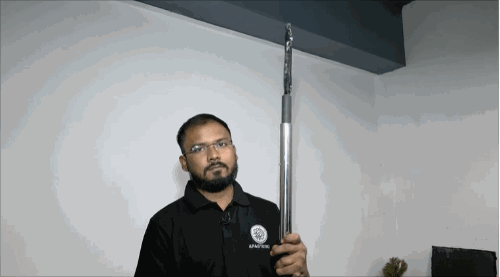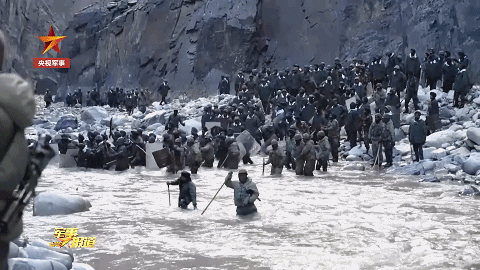After the Sino-Indian border conflict, the Indian army ordered a batch of "non-lethal weapons"...
On October 18, local time, "India Today" released a display video of the "non-lethal weapon" specially customized by the Indian army. This batch of weapons will be used by the Indian army on the Sino-Indian border to "response to the Chinese army." ".
According to reports, these weapons were developed by Apasteron, a company headquartered in Uttar Pradesh, India, and include tridents, metal rods, electric shock gloves, electric rods and special shields.
The staff showed off the newly customized "non-lethal weapons" of the Indian Army. Source: "India Today"
The report and display video also gave a special introduction to various weapons:
The trident is called Trishul, and its appearance is similar to that of the weapon held by Mahadev Shiva. It has a built-in battery and the tip of the halberd can release current. Special training is required before use.
The metal rod is called Vajra, and it also has a built-in battery, which is said to "release electric current to give the enemy a powerful blow." In addition, the metal rod is inlaid with many metal spikes, which can be used to pierce vehicles and weapons.
The electric shock glove is called Sapper Punch, which is used in hand-to-hand combat. The user needs to tie the battery module to the arm after wearing the glove. It is said that the charging time can be up to 8 hours, and it is waterproof and works at a temperature of 0 to 30 degrees.
The electric rod is called Dand and requires a combination of a "safety switch" and a button, so even if it is taken away, it cannot be operated without the "safety switch". It is said that the charging time of the electric baton can reach 8 hours, and it is waterproof.
The special shield named Bhadra is used to protect Indian soldiers from stone attacks. It is said to be able to "blind the enemy for a period of time" by emitting strong light, and the current in the shield can also cause an impact.
Video screenshot of the staff's demonstration of Bhadra
Mohit Kumar, chief technology officer of Apstron, said in an interview with "India Today" that after the outbreak of the Sino-Indian border conflict last year, they received the development of "non-lethal weapons for the Indian armed forces." "Request.
On June 15 last year, there was a fierce physical clash between China and India in the Kalwan River Valley area on the China-India border. The Indian military stated that the conflict resulted in the death of 20 Indian soldiers. On the 17th, State Councilor and Foreign Minister Wang Yi had a telephone conversation with Indian Foreign Minister Jaishan Sui. The two sides agreed to deal with the serious situation caused by the conflict in the Kalwan Valley in a fair manner.
According to CCTV military reports, foreign troops blatantly violated the consensus reached with our side and blatantly crossed the line to provoke. During the previous negotiations and fierce struggle, the regiment leader Qi Fabao took the lead and was seriously injured; the battalion commander Chen Hongjun and the soldier Chen Xiangrong broke into the heavy encirclement and rescued, fought back, and died heroically; the soldier Xiao Siyuan, after the breakthrough, returned to rescue his comrades without hesitation and fought to the last moment of their lives. The warrior Wang Zhuoran, on his way to support before crossing the river, tried his best to rescue the dispersed comrades out of danger, but he was submerged in the glacier.